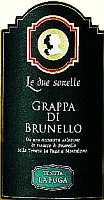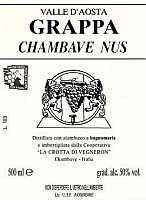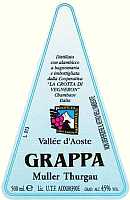
Wine Culture and Information since 2002 - Volume 22
 Wine Culture and Information since 2002 - Volume 22 |
|
MustardThe use of mustard is very ancient, Romans used is as a preservative, to keep fruit juices and must. French, thanks to Romans who exported it in Gaul, have become great producers and great mustard consumers |
|
The first written recipe of mustard, dated back to the fourth century b.C., talks about ground seeds with vinegar, oil and honey, however mustard is a versatile product used in many alchemies. The union of more or less strong and bitter seed, with spices, sugar, candy fruits, vinegar and must, give the birth to an universe of tastes to be explored. Mustard is a herbaceous plant, belonging to the family of Brassicacee, the same of cabbage (cruciferae). Flowers are grouped together in racemes, getting more compact during flowering, which then stretches with the ripening process. The fruit is a siliqua, supported by a long peduncle, divided in two parts: the lower part of cylindrical shape, contains round and light yellow seeds; the upper part - without seeds - has a stretched-sharped shape. All the siliquas show a rough surface, due to the presence of bristly hair.
|
|
Mustard is a plant coming from Asia, where it grows spontaneously. The first information about the cultivation of mustard are dated back to 3,000 B.C., in India, from where it was exported in the west as a precious spice: in fact, Romans and Greeks were known to commonly use mustard. Romans used it to preserve fruit juices and must, as well as eating green mustard as a cooked vegetable. Romans exported mustard to France, where it met the taste of people, becoming one of the main nations in the consumption of mustard.
Mustard was mentioned many times in the Bible. At those times, it was not used as a sauce, and its usage was limited to sprinkle broken seeds broken on foods. Only in the following period, in France, mustard is used as a sauce: seeds were crushed with honey and vinegar or mixed to grape must. It is very likely, this latter technique of preparation has given origin to the name mustard, from the Latin mustum ardens, or burning must. According to written documents, it is proved monks of Saint Germain des Près church - in Paris - were famous for the cultivation of mustard; Duke of Burgundy was famous for his parties, in which mustard was abundantly served. In 1634, producers of mustard and vinegar from Dijon obtained the exclusive right on the preparation of mustard, although they had to wear clean clothes, to keep only one shop and to brand barrels and jars with their name. Since 1937, mustard from Dijon is protected and recognized by specific French laws concerning the denomination of origin. Even today, the city of Dijon has the supremacy in production: almost half of worldwide production. In England, during the times of Shakespeare, mustard was prepared as a paste. By reading some passages of “Delights of ladies” from Sir Hugh Plat, we can understand the problems of producers and consumers of mustard at those times and why French set specific rules for the preparation of mustard. We read: «It is usual in Venice to sell the meal of mustard in their markets, as we do flour and meal in England: this meal by the addition of vinegar in two or three days becomes exceeding good mustard, but it would be much stronger and finer if the husks were first divided by sieving, which may easily be done, if you dry your seeds against the fire before you grind them. The Dutch iron handmills, or an ordinary pepper mill, may serve for this purpose. I thought it very necessary to publish this manner of making your sauce, because our mustard which we buy from the chandlers at this day, is many times made up with vile and filthy vinegar such as our stomach would abhor if we should see it before the mixing thereof with the seeds». When we talk about “mustard”, it is usually meant mustard seeds flour or the seeds themselves. The preparation based on mustard are called mustards, from the Latin mustum ardens, as many preparations make use of grape's must. The famous condiment, also called mustard, derives from two varieties of mustard: black mustard and Indian mustard, both being characterized by small, round and dark seeds. The other species - called yellow or white mustard - has larger seeds with a yellow ochre color. The particular taste of mustard is due to a glucoside, called sinagrin, in case of black mustard, or sinalbin, in case of white mustard.
|
||||||||
|
As there are many kinds of mustards, this is frequently the cause of a generalized confusion among mustard seeds and mustard sauces, including the many local recipes. Let's try to explain the differences in order to make things clear.
The hot taste of mustard is not present in the seeds of the plant and neither in the powder, but it is formed when the broken seed becomes in contact with water: only in this case a glucoside reacts with water, thanks to the action of an enzyme. The first phase in the preparation of mustard is the activation of this chemical reaction, which is very critical, because enzymes are very delicate and destroyed by hot water, inhibited by salt and vinegar. During the phase of the reaction, seeds are mixed with water, paying attention the reaction occurs correctly, allowing the seeds to rest in water for ten minutes, in order to allow the development of the essential oils. In case water is too hot, the enzyme is destroyed therefore obtaining a mild and bitter mustard, a taste caused by the non converted glucoside. When the reaction is over - that is after having obtained essential oils - the compound will be insensitive to salt and vinegar, but not to the heat, as essential oils are very volatile and can be easily lost. For this reason, in cooking mustard is always added at the end, in order to keep it “away” from the heat. Because of the fragility of this sauce, we can better understand the role of white mustard - which has not the real aroma of mustard - but stronger enzymes which are not easily damaged. Moreover, white mustard has the characteristic of keeping away mould and bacteria: this characteristic makes it a natural preservative. For this reason, white mustard is sometimes added to pickles. Another characteristic is to favor emulsion, therefore it is very useful in the preparation of mayonnaise sauce.
|
||||
|
From the eighteenth century on, all the most typical kinds of mustard were already common, the same kinds which are still today sold and consumed. English mustard. In the beginning, in England mustard was sold in powder, used for homemade preparations, by simply adding water and therefore obtaining mustard sauce. In the beginning of the eighteenth century, Mrs. Clements from Durham, invented a method which actually improved the preparation of mustard, both in the aspect as well as according to an organoleptic point of view. The success was acquired when the Royal Family gave its approval, from that moment on, Durham became the heart of mustard production. In the beginning of nineteenth century, Jeremiah Colman, a miller, fascinated by this extraordinary plant, invented a mechanized production system, and he also started a factory dedicated to the preparation of mustard. His technique consisted in finely ground mustard seeds which was subsequently sieved, dividing husks with a very fine filter made of silk, invented for this purpose. It was a real revolution in the world of mustard production, so that the name of Colman, in England, is still today the synonym of mustard. The traditional English mustard sauce is prepared with a very fine powder of black mustard, a little of white mustard and the addition of wheat flour. Wheat flour is used to improve its characteristics, absorbing part of oily substances. In some recipes, curcuma is added in order to correct color. Mustard prepared according to this recipe is called Double Superfine. Wheat flour is replaced by white mustard for people allergic to wheat. In Great Britain mustard is the traditional condiment for roast beef and ham, Welsh rarebit, as well as for fish sauces and vegetables. French mustard. French mustards (moutarde), even in case they are prepared industrially, keep traditional tastes intact, thanks to severe disciplinary of production. The main qualities of mustard used in France are two: Dijon mustard (or white mustard) and Bordeaux mustard. Dijon mustard is the most consumed in France - more than 80% - although in England, when they talk to French mustard, they refer to the one from Bordeaux, probably because this city was the main port from which French wines were exported to England and frequently wine shared the hold with mustard loads. Bordeaux mustard, of dark color because of the presence and of sweet-and-sour taste because of sugar and vinegar, is frequently flavored with herbs and spices, has a mild taste and it is used with cold meat dishes, sausages, cold cuts and vegetables. Dijon mustard has a lighter aspect - because of the absence of bran - and a marked and strong taste, although it does not have the same hotness of English mustard. Besides the mustards from Dijon and Bordeaux, in France there are other kinds of mustards: Moutarde Florida made with Champagne, Louit with the addition of red pepper, Moutarde des trois fruits rouges, so delicate and aromatic as to be put at the border of the category of mustard. Famous are also the mustards from Orleans, pretty sweet, and the one from Meaux, with a little sweet taste. German mustard. German mustard is similar to the ones from Bordeaux, shows the same dark color, has a sour-and-sweet taste and flavored with herbs and spices. German mustard can be wonderfully matched to Würstel and sausages. The heart of production of German mustard is Düsseldorf. Mustard from United States of America. It is based on the seeds of white mustard, is a pretty light mustard, which reminds spicy pickles. It is the classic mustard eaten with hot dogs. Italian mustard. Also in Italy, there are mustard preparations. The most famous one is Mostarda di Cremona. It is a spicy fruits preserve, flavored with mustard. It is served with boiled meat and cold roasts. Mostarda di Mantova is prepared using quinces, which give a sour taste.
|
|
Mustard is not used only in powder or in sauce. Mustard seeds are commonly found in pickles, in the Eastern countries they are used in the preparation of curry and in many Indian preparations mustard seeds are sauteed with ghee, exalting the sweet taste of mustard. Another product obtained from mustard seeds is mustard oil, very important in Indian and Pakistan cooking. It is produced by crushing the seeds of different species. The Indian continent produces 40% of worldwide mustard oil. Hot mustards increase gastrointestinal secretions, therefore the abuse is not advisable in order to avoid inflammations of the digestive apparatus. Mustard has also antioxidant properties. Mustards - in case they are not based on sugar, candy or syrupy fruits - can flavor dishes without adding calories. Aromas which develop during the preparation of mustard tend to disperse easily, therefore it is not advisable the purchasing of large jars. After opening, mustards must be kept in fridge, where they can stay even for a long period. French and English mustards do not contain relevant quantities of sugar and they can be kept for fews months. Italian mustards can be kept for some weeks only. Besides temperature, it should be remembered mustard does not tolerate light, which makes it darker and less tasty.
|
AquavitaeReview of Grappa, Distillates and Brandy |
|
|
| Distillates are rated according to DiWineTaste's evaluation method. Please see score legend in the "Wines of the Month" section. |

|
|
Grappa Il Pareto |
|
| Tenuta di Nozzole (Tuscany, Italy) | |
| (Distiller: Distillerie Berta) | |
| Raw matter: Pomace of Cabernet Sauvignon | |
| Price: € 20.00 - 50cl | Score: |
| The grappa is colorless, limpid and crystalline. The nose reveals intense, clean, pleasing and refined aromas of black cherry, black currant, blueberry, plum, licorice and cyclamen, with almost imperceptible alcohol pungency. In the mouth has intense flavors, with perceptible alcohol pungency which tends to dissolve rapidly, good correspondence to the nose, balanced sweet hint, pleasing roundness. The finish is persistent with flavors of black cherry, plum and blueberry. This grappa is distilled with discontinuous steam alembic still in copper boilers. Alcohol 43%. | |

|
|
Grappa di Brunello Le Due Sorelle |
|
| Tenuta La Fuga (Tuscany, Italy) | |
| (Distiller: Distillerie Berta) | |
| Raw matter: Pomace of Sangiovese Grosso | |
| Price: € 20.00 - 50cl | Score: |
| This grappa shows a brilliant amber yellow color, limpid and crystalline. The nose reveals intense, clean, pleasing and refined aromas of prune, vanilla, licorice, black cherry, hazelnut, honey and dried fig, with almost imperceptible alcohol pungency. The mouth has intense flavors with alcohol pungency which tends to dissolve rapidly, good correspondence to the nose, balanced sweet hint, pleasing roundness. The finish is persistent with flavors of prune, honey, dried fig and hazelnut. This grappa ages in barrique and it is distilled with discontinuous steam alembic still in copper boilers. Alcohol 43%. | |

|
|
Grappa Chambave Nus |
|
| La Crotta di Vegneron (Vallée d'Aoste, Italy) | |
| Raw matter: Pomace of Chambave Rouge and Nus red grapes | |
| Price: € 15.50 - 50cl | Score: |
| This grappa is colorless, limpid and crystalline. The nose denotes intense, clean and pleasing aromas of raspberry, plum, cherry, pear and hazelnut, with almost imperceptible alcohol pungency. In the mouth has intense flavors with perceptible alcohol pungency which tends to dissolve rapidly, good correspondence to the nose, balanced sweet hint. The finish is persistent with flavors of plum and cherry. This grappa is distilled in bainmarie alembic stills. Alcohol 50%. | |

|
|
Grappa Müller Thurgau 2000 |
|
| La Crotta di Vegneron (Vallée d'Aoste, Italy) | |
| Raw matter: Pomace of Müller Thurgau | |
| Price: € 22.00 - 50cl | Score: |
| This grappa is colorless, limpid and crystalline. The nose reveals intense, clean and pleasing aromas of grape, pear, peach, banana, walnut and apple, with almost imperceptible alcohol pungency. The mouth has intense flavors with perceptible alcohol pungency which tends to dissolve rapidly, good correspondence to the nose, sweet balanced hint and pleasing roundness. The finish is persistent with flavors of grape, peach and pear. This grappa is distilled in bainmarie alembic stills. Alcohol 45%. | |
Wine Parade |
|
|
| The best 15 wines according to DiWineTaste's readers. To express your best three wines send us an E-mail or fill in the form available at our WEB site. |
| Rank | Wine, Producer | |
|---|---|---|
| 1 |
| Amarone della Valpolicella Classico 1998, Santa Sofia (Italy) |
| 2 |
| Aglianico del Vulture La Firma 2002, Cantine del Notaio (Italy) |
| 3 |
| Trento Talento Brut Riserva Methius 1998, Dorigati (Italy) |
| 4 |
| Colli Orientali del Friuli Rosazzo Bianco Terre Alte 2002, Livio Felluga (Italy) |
| 5 |
| Palazzo della Torre 2000, Allegrini (Italy) |
| 6 |
| Riesling Central Otago 2004, Felton Road (New Zealand) |
| 7 |
| Montepulciano d'Abruzzo Riparosso 2001, Illuminati (Italy) |
| 8 |
| Brunello di Montalcino 1999, Castello Banfi (Italy) |
| 9 |
| Chablis Grand Cru Les Clos 2002, Domaine Billaud-Simon (France) |
| 10 |
| Amarone della Valpolicella Classico 2000, Zenato (Italy) |
| 11 |
| Wine Obsession 2001, Vignamaggio (Italy) |
| 12 |
| Harmonium 2001, Firriato (Italy) |
| 13 |
| Rêve 2001, Velenosi Ercole (Italy) |
| 14 |
| Chianti Classico Riserva Novecento 2000, Dievole (Italy) |
| 15 |
| Notarpanaro 1999, Taurino (Italy) |
|
||||||||
|
DiWineTaste Polls
|
| |||||||
Privacy Policy | |||||||


| Copyright © 2002-2024 Antonello Biancalana, DiWineTaste - All rights reserved |
| All rights reserved under international copyright conventions. No part of this publication and of this WEB site may be
reproduced or utilized in any form or by any means, electronic or mechanical, without permission in writing from DiWineTaste. |